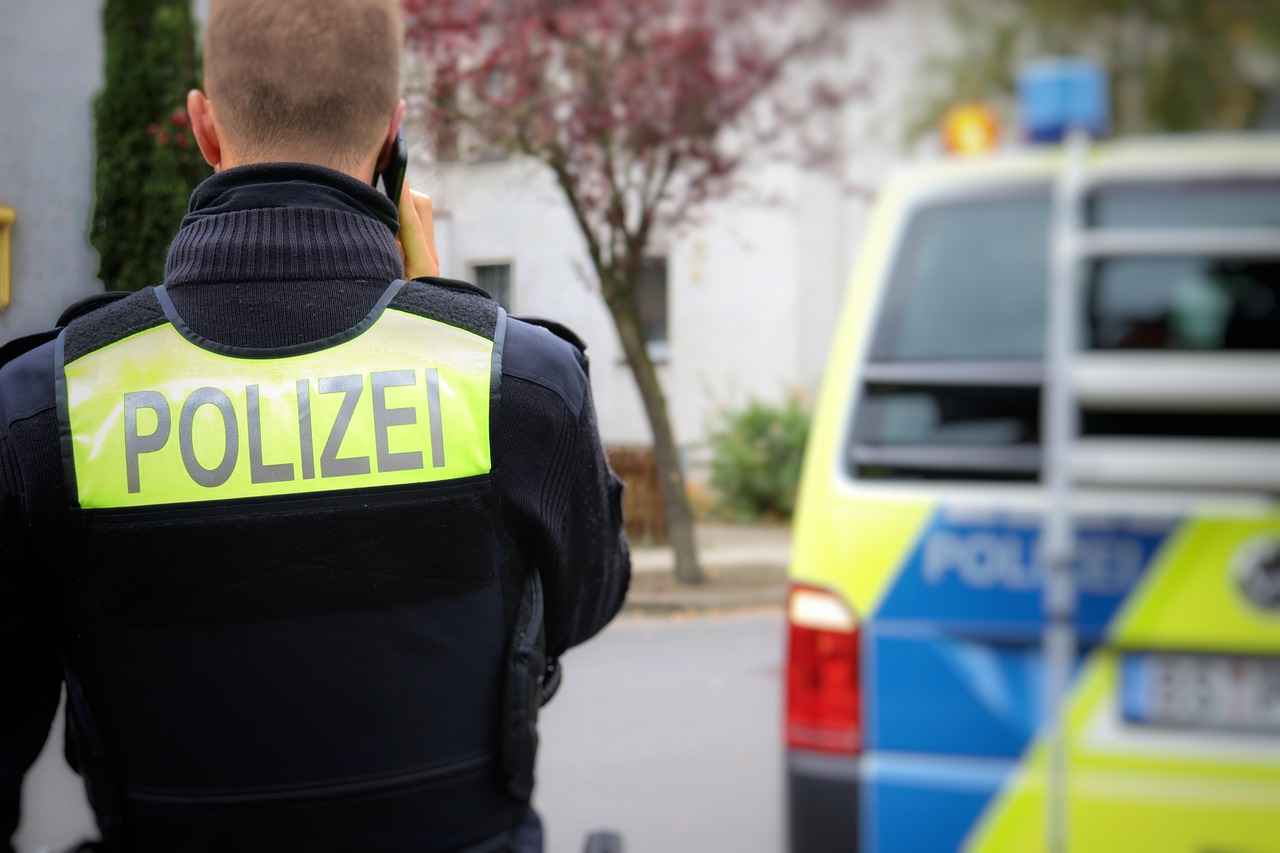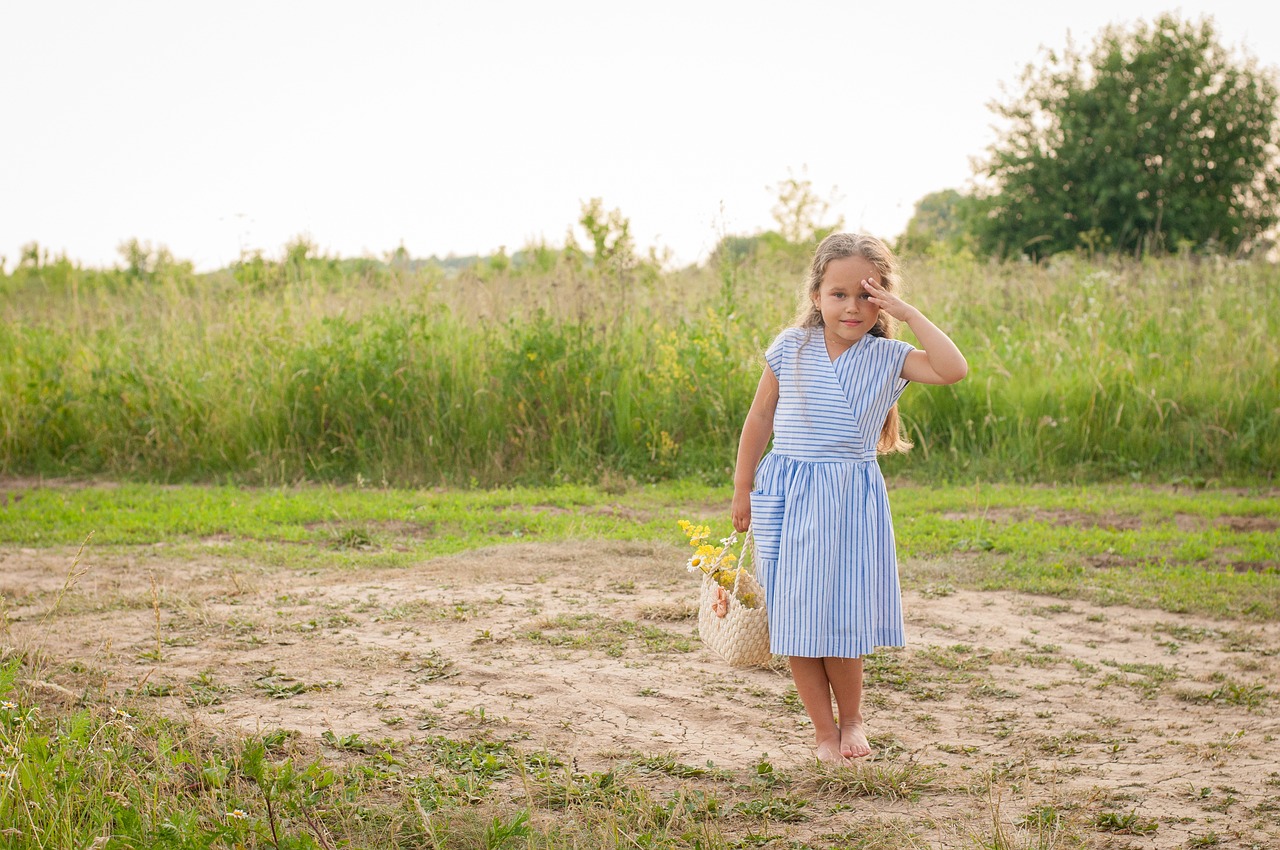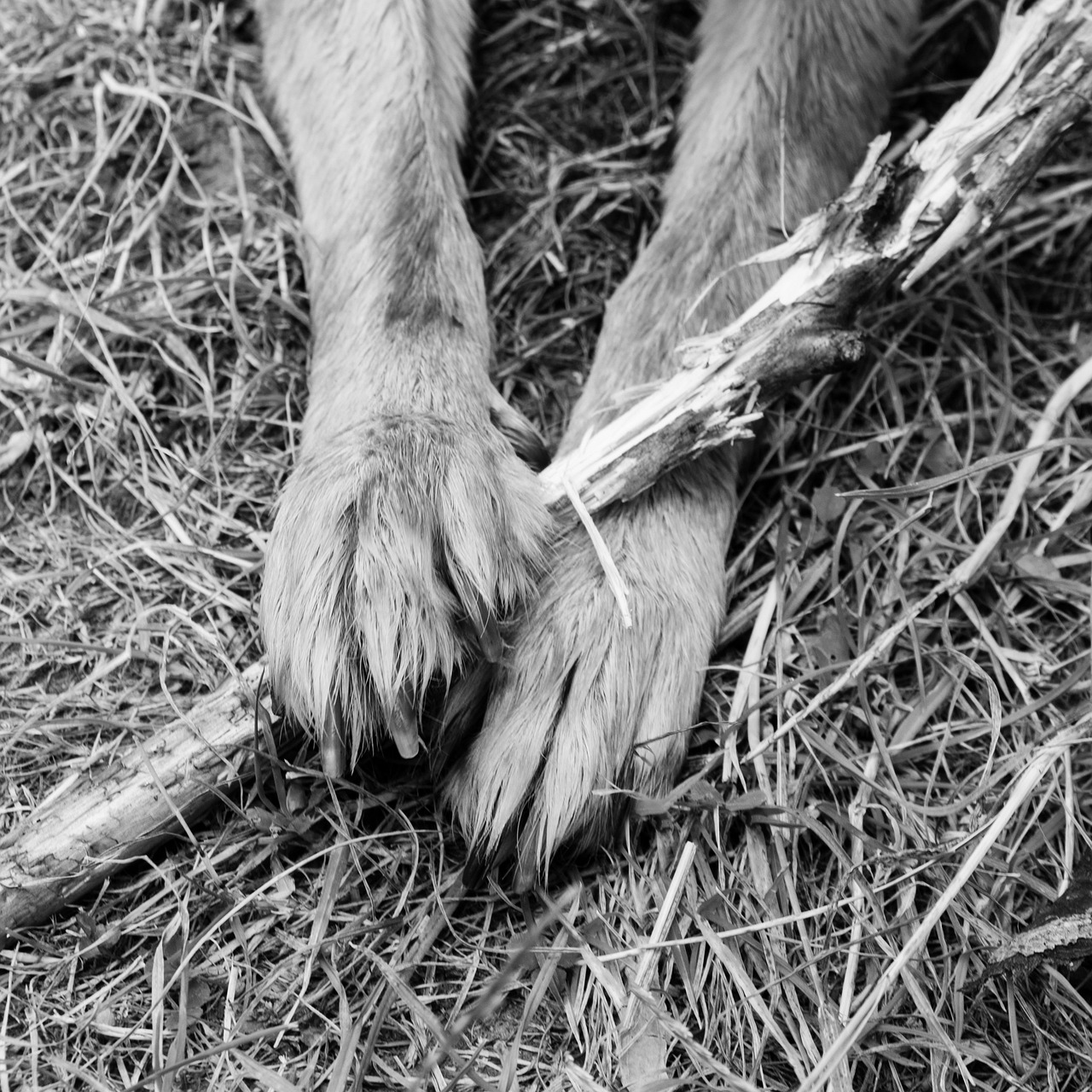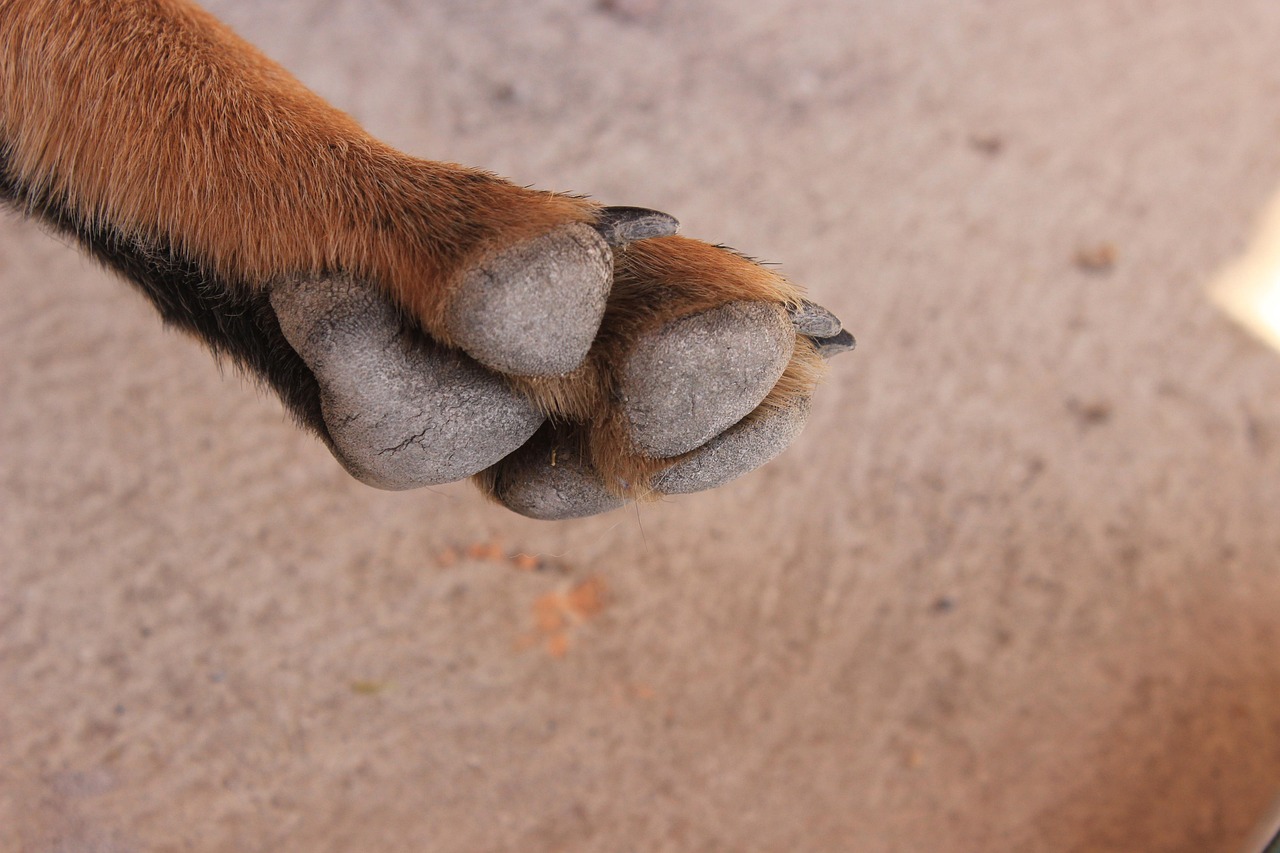Ryder from Paw Patrol is not just a character; he represents the essence of leadership and teamwork for young audiences. As the dynamic leader of the Paw Patrol, Ryder’s adventures and interactions with his team of rescue dogs provide valuable lessons in courage, problem-solving, and friendship. This article will delve into Ryder’s character traits, his pivotal role in the series, and the profound impact he has on young viewers.
Who is Ryder in Paw Patrol?
Ryder, a 10-year-old boy, is the central figure of the Paw Patrol. He leads a team of heroic pups, each with unique skills, to tackle various rescue missions. Known for his bravery and intelligence, Ryder is a character that children admire and aspire to emulate.
What are Ryder’s Key Characteristics?
- Leadership: Ryder exemplifies strong leadership qualities, guiding his team with confidence and clarity.
- Teamwork: He fosters a spirit of collaboration, showing that working together is essential for success.
- Empathy: Ryder’s ability to understand and care for others reinforces the importance of compassion.
Ryder’s Leadership Skills
Ryder’s leadership is evident in how he manages the Paw Patrol. He not only assigns missions but also encourages each pup to utilize their strengths. This highlights the significance of trust and collaboration in achieving common goals.
Problem-Solving Abilities
During rescue missions, Ryder’s quick thinking and resourcefulness shine. He often devises innovative solutions, teaching children the value of critical thinking and adaptability in real-life situations.
Empathy and Compassion
Ryder consistently displays kindness and understanding, which are vital for building strong relationships. His interactions with his team and the community reinforce the importance of being compassionate.
Ryder’s Relationship with the Paw Patrol Team
Ryder shares a unique bond with each member of the Paw Patrol. This connection emphasizes the significance of teamwork and friendship in overcoming challenges, making each episode relatable and engaging for children.
What is Ryder’s Role in Paw Patrol Episodes?
In every episode, Ryder evaluates situations and assigns missions to his team. His guidance not only helps them succeed but also imparts essential life lessons about responsibility and perseverance.
Mission Assignments
Ryder carefully assesses each scenario, delegating tasks based on the pups’ unique skills. This approach teaches children the importance of recognizing individual strengths within a team.
Encouragement and Support
Throughout challenging missions, Ryder motivates his team, instilling confidence and resilience. His support is a crucial element that encourages young viewers to face their own challenges.
How Does Ryder Influence Young Viewers?
Ryder serves as a powerful role model, inspiring children to embrace leadership qualities while promoting values such as teamwork, responsibility, and kindness.
Building Leadership Skills
Through Ryder’s actions, children learn to take initiative and work collaboratively, which are essential skills in both personal and academic settings.
Promoting Positive Values
Ryder’s character reinforces the importance of empathy and community service, fostering a sense of social responsibility among young audiences.
What Makes Ryder a Beloved Character?
Ryder’s relatability, charm, and positive traits contribute to his popularity among fans, enhancing the overall success of the show.
Relatable Personality
As a young leader, Ryder resonates with children who aspire to make a difference, making him an accessible role model.
Engaging Storylines
The adventures in each episode not only entertain but also subtly impart important life lessons through Ryder’s leadership, making the show both enjoyable and educational.

Who is Ryder in Paw Patrol?
Ryder is not just any ordinary boy; he is the 10-year-old leader of the Paw Patrol, a team dedicated to rescuing those in need. His character resonates with children and parents alike, thanks to his remarkable traits that make him a role model. In the world of animated series, Ryder stands out for his combination of bravery, intelligence, and exceptional problem-solving skills.
Ryder is a young boy who takes on the responsibility of leading a group of rescue dogs known as the Paw Patrol. Each episode showcases his leadership as he guides his team through various missions, all while teaching valuable lessons about teamwork and friendship. His character is designed to inspire children to take initiative and act heroically, making him a beloved figure in children’s programming.
Ryder embodies several key characteristics that contribute to his effectiveness as a leader. These include:
- Leadership: Ryder demonstrates strong leadership skills by making quick decisions and guiding his team through challenges.
- Teamwork: He fosters a spirit of collaboration, encouraging each pup to contribute their unique skills.
- Empathy: Ryder shows kindness and understanding, reinforcing the importance of compassion in relationships.
With every mission, Ryder showcases his exceptional leadership abilities. He not only directs the team but also instills a sense of trust and collaboration among the pups. His ability to assess situations and delegate tasks based on each dog’s strengths is a vital lesson in teamwork for young viewers.
Ryder’s quick thinking and resourcefulness often lead to innovative solutions during rescue missions. For example, when faced with unexpected challenges, he remains calm and devises a plan, teaching children the value of critical thinking and adaptability in real-life situations.
Ryder consistently demonstrates empathy and compassion towards others. Whether he is comforting a frightened pup or helping a community member in distress, his actions reinforce the importance of understanding and kindness in building strong relationships.
Ryder shares a unique bond with each member of the Paw Patrol. This relationship emphasizes the significance of teamwork and friendship in overcoming obstacles. His ability to connect with each pup individually helps to create a cohesive unit that works effectively together.
In every episode, Ryder plays a crucial role by assigning missions to the Paw Patrol. He evaluates situations, provides guidance, and supports his team, all while imparting valuable life lessons about responsibility and perseverance.
Ryder carefully assesses each situation and delegates tasks to specific pups based on their unique skills. This illustrates the importance of recognizing individual strengths within a team, a lesson that resonates with young viewers.
Throughout challenging missions, Ryder serves as a source of motivation for his team. He instills confidence and resilience, traits that are essential for children to develop as they navigate their own challenges.
Ryder serves as a positive role model, inspiring children to become leaders in their own lives. His character promotes values such as teamwork, responsibility, and kindness, which are crucial for personal development.
Through Ryder’s actions, children learn about the importance of leadership qualities. His proactive approach encourages them to take initiative and work collaboratively in their own environments.
Ryder’s character reinforces essential values like empathy and community service, fostering a sense of social responsibility among young audiences. This positive influence helps shape the next generation into caring and responsible individuals.
Ryder’s relatability, charm, and positive traits make him a favorite among fans. His character contributes significantly to the show’s success and its impact on children’s programming.
As a young leader, Ryder resonates with children who aspire to make a difference. His accessibility as a role model encourages viewers to emulate his positive traits.
The adventures and challenges presented in each episode keep children entertained while imparting important life lessons through Ryder’s leadership. This combination of fun and education makes the series a valuable resource for young audiences.

What are Ryder’s Key Characteristics?
Ryder, the dynamic leader of the Paw Patrol, exemplifies a range of admirable qualities that resonate with young audiences. As the driving force behind his team of rescue dogs, Ryder’s character is crafted to teach essential life lessons, making him a pivotal figure in children’s programming.
One of Ryder’s most prominent traits is his leadership. At just 10 years old, he demonstrates an impressive ability to guide his team through various challenges. His leadership style is characterized by collaboration and trust, essential elements that he instills in his team during every mission. By actively involving each pup in the decision-making process, Ryder showcases the importance of teamwork and the value of diverse perspectives. This approach not only empowers his team but also illustrates to young viewers that effective leaders listen and incorporate the ideas of others.
Another critical characteristic of Ryder is his empathy. He consistently shows compassion towards both his team and the community they serve. Whether it’s comforting a frightened animal or encouraging a teammate who doubts their abilities, Ryder’s empathetic nature teaches children the significance of understanding and kindness. This quality reinforces the idea that true leadership involves caring for others and building strong relationships.
Ryder’s problem-solving abilities further enhance his character. He approaches each mission with a clear and analytical mindset, often thinking on his feet to devise innovative solutions. For example, when faced with a tricky situation, he quickly assesses the problem and formulates a plan that utilizes the unique skills of each pup. This not only highlights the importance of critical thinking but also encourages children to tackle their own challenges with a similar mindset.
Ryder’s relationship with the Paw Patrol team is another aspect that exemplifies his leadership qualities. He shares a unique bond with each member, emphasizing the significance of friendship and teamwork. By celebrating each pup’s individual strengths, Ryder fosters a sense of belonging and unity within the team. This dynamic serves as a powerful reminder to young viewers about the importance of supporting one another in both personal and collaborative endeavors.
Through his adventures, Ryder also teaches lessons about responsibility and perseverance. Each episode presents new challenges that require careful planning and dedication. Ryder’s unwavering commitment to his missions serves as a model for children, encouraging them to take responsibility for their actions and to persist in the face of adversity. This is particularly important as it helps instill a growth mindset in young viewers, teaching them that setbacks are merely stepping stones to success.
In summary, Ryder’s key characteristics—leadership, empathy, problem-solving, and a strong sense of responsibility—make him an exemplary role model for children. His ability to connect with his team and face challenges head-on sets a positive example, inspiring young viewers to develop similar qualities in their own lives. By embodying these traits, Ryder not only entertains but also educates, making him a beloved figure in children’s media.
Ryder’s Leadership Skills
Ryder’s leadership skills are a cornerstone of the Paw Patrol series, illustrating how effective leadership can inspire a team to achieve remarkable results. As the young leader of a group of rescue dogs, Ryder exemplifies the essence of teamwork, collaboration, and trust, demonstrating these qualities through various missions.
Ryder’s ability to lead is not just about giving orders; it’s about empowering his team to take initiative and make decisions. He understands that each member of the Paw Patrol has unique strengths and talents, which he leverages to ensure the best outcomes for their missions. This approach highlights the significance of recognizing and valuing individual contributions within a team.
During missions, Ryder often conducts briefings where he clearly outlines the objectives and assigns specific roles to each pup. This strategic delegation not only enhances efficiency but also fosters a sense of responsibility among the team members. By doing so, Ryder teaches young viewers the importance of trust and collaboration in achieving common goals.
Ryder actively encourages open communication among the team, creating an environment where everyone feels comfortable sharing ideas and concerns. This practice is vital in developing strong interpersonal relationships, as it allows the pups to work together seamlessly. Ryder’s emphasis on teamwork serves as a valuable lesson for children, showing them that collaboration can lead to greater success.
One of Ryder’s most admirable traits is his ability to think on his feet. When faced with unexpected challenges, he remains calm and composed, guiding his team through complex situations. His problem-solving skills are showcased in various episodes, where he devises creative solutions that often require quick thinking and adaptability. This aspect of his leadership teaches children the importance of resilience and resourcefulness in overcoming obstacles.
Ryder’s leadership style is characterized by his ability to instill confidence in his team. He consistently offers words of encouragement, motivating the pups to push their limits and believe in their abilities. This positive reinforcement not only boosts morale but also helps the pups develop their skills and grow as individuals. Young viewers can learn from this approach, understanding that supportive leadership can empower others to excel.
Another key component of Ryder’s leadership is his empathy. He shows genuine care for his team and the community, often taking the time to listen to their concerns and offer support. This quality fosters a strong bond among the team members and reinforces the idea that a leader should prioritize the well-being of their team. By modeling empathy, Ryder teaches children the importance of compassion and understanding in building meaningful relationships.
Through his exemplary leadership skills, Ryder serves as a role model for young audiences. He embodies values such as responsibility, teamwork, and kindness, encouraging children to adopt these traits in their own lives. By watching Ryder navigate various challenges, children learn that effective leadership is not just about authority; it’s about inspiring others to work together towards a common goal.
In conclusion, Ryder’s leadership skills in Paw Patrol are a fundamental aspect of the show’s appeal. His ability to guide, motivate, and empathize with his team provides valuable lessons for young viewers, making him a beloved character and a positive influence in children’s programming.
Problem-Solving Abilities
Ryder’s Problem-Solving Abilities are one of the standout features of his character in Paw Patrol. His quick thinking and resourcefulness are not just traits; they are essential skills that he utilizes during rescue missions. These abilities teach children the importance of critical thinking and creativity in everyday situations.
Throughout the series, Ryder encounters various challenges that require him to think on his feet. Whether it’s a dog stuck in a tree or a kitten lost in a maze, Ryder assesses the situation rapidly and devises a plan. This not only entertains but also demonstrates to young viewers that problem-solving is a skill that can be developed.
Ryder often uses a methodical approach to tackle problems. First, he analyzes the situation by gathering information. He listens to the concerns of his team and the community, ensuring that he understands all aspects of the problem. This step is crucial, as it teaches children the value of listening and observing before jumping to conclusions.
Once he has a clear understanding, Ryder brainstorms potential solutions. He encourages his team to contribute ideas, fostering a sense of collaboration and teamwork. This aspect of his character emphasizes that two (or more) heads are often better than one, and it reinforces the idea that teamwork is vital in overcoming obstacles.
After considering various options, Ryder chooses the best course of action and executes it with confidence. His ability to remain calm under pressure is a powerful message for children. It shows them that staying composed can lead to better decision-making, especially in stressful situations.
Moreover, Ryder often reflects on the outcomes of their missions. He discusses what went well and what could be improved, teaching children the importance of reflection and adaptation. This not only reinforces the learning process but also encourages kids to embrace mistakes as opportunities for growth.
Through Ryder’s adventures, young viewers learn that problem-solving is not just about finding answers but also about the journey of exploring different possibilities. His character embodies the idea that every challenge is an opportunity for innovation and creativity.
In summary, Ryder’s quick thinking and resourcefulness serve as a beacon of inspiration for children. By watching him navigate complex situations, they learn invaluable lessons about critical thinking, teamwork, and the importance of maintaining a positive attitude when faced with challenges. These lessons are not only applicable in the context of the show but also resonate with their everyday lives, encouraging them to become resourceful problem solvers in their own right.
Empathy and Compassion
In the world of children’s entertainment, few characters exemplify empathy and compassion as poignantly as Ryder from Paw Patrol. As the central figure leading a team of rescue dogs, Ryder’s actions consistently reflect the significance of kindness, not just in personal relationships but also in broader community interactions. His approach to leadership serves as a vital lesson for young viewers, emphasizing how understanding others can forge strong bonds and create a supportive environment.
Ryder’s character is a beacon of empathy. He is always attentive to the feelings and needs of his team members, ensuring that everyone feels valued and heard. For instance, during missions, he takes the time to listen to the concerns of each pup, allowing them to express their thoughts and emotions. This practice not only fosters a sense of belonging but also teaches children the importance of active listening in their own lives. By modeling this behavior, Ryder encourages young viewers to be more aware of the emotions of those around them.
Ryder’s consistent display of kindness has a profound impact on the dynamics of the Paw Patrol team. His ability to show appreciation for each member’s unique contributions reinforces the idea that every individual plays a crucial role in achieving a common goal. This reinforces the notion that teamwork thrives in an atmosphere of respect and encouragement. Children watching Ryder in action learn that kindness can enhance collaboration and lead to successful outcomes.
Beyond his immediate team, Ryder’s compassion extends to the community. He regularly engages in initiatives that help those in need, whether it’s rescuing animals or assisting citizens during emergencies. This portrayal of community service instills a sense of social responsibility in young viewers, encouraging them to contribute positively to their surroundings. Ryder exemplifies how one person’s actions can inspire others to act with kindness, creating a ripple effect of compassion.
In various episodes, Ryder encounters conflicts that require empathy and understanding to resolve. His approach often involves mediating disagreements between team members or addressing the concerns of community members. By demonstrating effective conflict resolution strategies, Ryder teaches children that empathy is essential in navigating disagreements. This skill is invaluable as it prepares them to handle similar situations in their own lives.
Ryder’s character is not just about leading a team; he embodies the principles of emotional intelligence. By recognizing and validating the emotions of those around him, he models how to manage one’s feelings while also being considerate of others. This dual focus is crucial for children as they develop their own emotional skills. By following Ryder’s example, they learn to navigate their emotions and respond to others with kindness and understanding.
Ryder’s influence goes beyond individual episodes; he fosters a culture of kindness that resonates with viewers long after the credits roll. His adventures remind children that empathy and compassion are not just traits to admire but are essential qualities to practice in everyday life. By instilling these values, Ryder encourages a generation to prioritize kindness, shaping a more compassionate world.
In summary, Ryder from Paw Patrol serves as a powerful example of how empathy and compassion can transform relationships and communities. Through his actions, he teaches young viewers the importance of understanding and supporting one another, making him a beloved character and a positive role model.
Ryder’s Relationship with the Paw Patrol Team
is a fundamental aspect of the show that highlights the essence of collaboration and camaraderie. Each member of the Paw Patrol plays a crucial role, and Ryder’s unique bond with them fosters a sense of unity that resonates with young viewers.
Ryder, as the young leader, not only guides the team through various challenges but also nurtures individual relationships with each pup. This dynamic is essential in teaching children about the importance of teamwork and how different strengths contribute to collective success. For instance, he understands that each dog has unique skills—Chase is great for police work, Marshall excels in firefighting, and Skye brings aerial support. By recognizing these strengths, Ryder demonstrates the value of diversity in a team setting.
- Trust and Communication: Ryder encourages open communication within the team, fostering an environment where every pup feels valued and heard. This trust is crucial when they face obstacles, as it allows them to work together effectively.
- Encouraging Growth: He is not just a leader but also a mentor, pushing each member to grow and develop their skills. This aspect of his relationship with the pups teaches children that personal growth is a continuous journey.
- Celebrating Achievements: Ryder celebrates the successes of his team, big or small, reinforcing the idea that teamwork leads to shared victories. This practice instills a sense of accomplishment and motivates the pups to strive for excellence.
Ryder’s bond with the Paw Patrol is also characterized by empathy. He shows understanding and compassion, especially when a team member faces difficulties. This emotional support is vital, as it teaches children the importance of being there for friends during tough times. For example, when a pup feels discouraged, Ryder is quick to offer encouragement, reminding them of their abilities and the importance of perseverance.
Moreover, Ryder’s relationship with the Paw Patrol is a reflection of friendship. Their interactions are filled with playful banter and moments of joy, which not only entertain but also highlight the significance of having fun while working together. This aspect of their relationship showcases how friendships can thrive in a collaborative environment, teaching children that strong bonds are built through shared experiences.
In summary, Ryder’s relationship with the Paw Patrol team is a multi-faceted one that embodies the principles of teamwork, trust, and empathy. Through his leadership, he not only guides the pups in their missions but also fosters an environment where friendships flourish and individual strengths are celebrated. This relationship serves as a powerful lesson for young viewers, emphasizing that overcoming challenges is always easier when you have a supportive team by your side.

What is Ryder’s Role in Paw Patrol Episodes?
In the vibrant world of Paw Patrol, Ryder plays a pivotal role as the young leader who guides his team of rescue dogs through various missions. Each episode is crafted to not only entertain but also to impart valuable life lessons to young viewers. Understanding Ryder’s role in these episodes provides insight into the show’s educational value and its impact on children’s development.
Ryder is responsible for evaluating situations that arise in Adventure Bay. He assesses the challenges at hand and assigns missions to the Paw Patrol pups based on their unique skills and strengths. This approach highlights the importance of recognizing individual talents within a team. For example:
- Chase: Often tasked with law enforcement missions due to his police skills.
- Marshall: Takes on firefighting duties, showcasing bravery and quick response.
- Skye: Uses her flying abilities for aerial reconnaissance and rescue operations.
This method not only teaches children about teamwork but also emphasizes the importance of utilizing each member’s strengths for successful outcomes.
Throughout each mission, Ryder provides constant encouragement and support to his team. His ability to motivate the pups during challenging situations is a key aspect of his leadership. For instance, when the team faces a daunting task, Ryder often reminds them of their training and capabilities, instilling a sense of confidence and resilience. This is crucial for young viewers, as it teaches them to believe in themselves and their abilities, especially when faced with obstacles.
Ryder’s guidance during missions is instrumental in teaching children about responsibility and perseverance. Each episode often revolves around a problem that needs solving, and Ryder demonstrates how to approach challenges methodically:
1. Identify the problem.2. Develop a plan.3. Execute the plan while adapting to changes.4. Reflect on the outcome and learn from the experience.
This structured approach not only helps the Paw Patrol succeed but also provides a framework for young viewers to tackle their own challenges in real life.
Ryder serves as a role model for young viewers, showcasing essential leadership qualities such as decisiveness, empathy, and collaboration. His ability to lead by example encourages children to take initiative in their own lives. By watching Ryder, children learn that being a leader is not just about being in charge but also about supporting others and fostering a sense of community.
Ryder’s character reinforces values such as kindness, teamwork, and community service. Each mission often includes a moral lesson, encouraging children to think about how they can contribute positively to their surroundings. For example, when Ryder and the Paw Patrol help a neighbor in need, it teaches children about the importance of helping others and being a good friend.
The combination of Ryder’s leadership and the engaging storylines of Paw Patrol resonates with children, making the show not just entertaining but also educational. By portraying a young leader who embodies positive traits, the series inspires children to emulate these behaviors in their own lives. Ryder’s influence extends beyond the screen, promoting values that are crucial for personal and social development.
In summary, Ryder’s role in Paw Patrol is multifaceted, encompassing mission assignments, encouragement, and the promotion of essential life skills. His character serves as a beacon of leadership and positivity, making a lasting impact on young viewers.
Mission Assignments
In the vibrant world of Paw Patrol, Ryder stands out as a remarkable young leader, demonstrating the significance of strategic thinking and effective delegation. His approach to mission assignments is not just about giving orders; it is a well-thought-out process that showcases his understanding of each pup’s unique abilities. This method not only enhances the team’s efficiency but also fosters a sense of belonging and purpose among the pups.
Evaluating Situations with Precision
When faced with a new mission, Ryder takes the time to thoroughly assess the situation. He carefully considers the challenges at hand and the skills required to overcome them. This initial evaluation is crucial, as it sets the foundation for effective task delegation. By analyzing each scenario, Ryder ensures that the right pup is assigned to the right task, maximizing the chances of success.
Delegating Tasks Based on Individual Strengths
One of Ryder’s key strengths is his ability to recognize the individual strengths of each pup on his team. For instance, if a mission requires speed and agility, he might assign Chase, the police pup, to take the lead. Conversely, if the task involves construction or heavy lifting, Rubble would be the ideal choice. This tailored approach not only boosts the team’s effectiveness but also empowers each pup, making them feel valued and respected.
Building Team Cohesion and Trust
Ryder’s thoughtful delegation fosters a strong sense of team cohesion. By involving each pup in a way that aligns with their skills, he promotes collaboration and trust within the group. The pups learn to rely on one another, understanding that they each play a vital role in achieving their common goals. This dynamic reinforces the idea that teamwork is essential for success, a lesson that resonates with young viewers.
Encouraging Growth and Development
Ryder’s method of delegating tasks also encourages personal growth among the pups. By assigning responsibilities that challenge them, he helps them develop new skills and build confidence. For example, when Skye is tasked with aerial reconnaissance, she not only showcases her flying abilities but also learns to make quick decisions under pressure. This growth mindset is crucial for children, as it teaches them the value of perseverance and adaptability.
Conclusion
In summary, Ryder’s approach to mission assignments in Paw Patrol exemplifies the importance of recognizing and leveraging individual strengths within a team. His ability to evaluate situations and delegate tasks effectively not only enhances the performance of the Paw Patrol but also instills valuable life lessons in young viewers. By showcasing the power of teamwork, trust, and personal development, Ryder serves as an inspiring role model for children, encouraging them to embrace their unique abilities and work collaboratively towards common goals.
Encouragement and Support
In the vibrant world of Paw Patrol, Ryder stands out as a beacon of hope and leadership, particularly during challenging missions. His ability to motivate his team is not just a narrative device; it is a vital lesson for young viewers. By instilling confidence and resilience in his team, Ryder teaches children essential traits that they can apply in their own lives.
Ryder’s encouragement often comes at pivotal moments when the Paw Patrol faces daunting challenges. For instance, when the team is unsure about their ability to complete a mission, Ryder’s unwavering belief in their skills serves as a powerful reminder of the importance of self-belief. His words are not merely motivational; they are carefully crafted to resonate with the pups, reinforcing the idea that every challenge is an opportunity for growth.
One of the most significant aspects of Ryder’s support is his ability to recognize each pup’s unique strengths. By assigning tasks that align with their individual skills, he fosters a sense of teamwork and collaboration. This approach not only boosts the pups’ confidence but also teaches young viewers the value of understanding and appreciating diversity within a team. Children learn that everyone has something special to contribute, which is a crucial lesson in both personal and professional settings.
Furthermore, Ryder’s role as a mentor goes beyond just mission assignments. He often engages in conversations with the pups, encouraging them to express their feelings and concerns. This open communication fosters an environment of trust and support, where team members feel safe to share their thoughts. Young viewers witness firsthand how effective communication can lead to stronger relationships and better problem-solving.
Ryder also exemplifies the importance of resilience. When faced with setbacks, he demonstrates how to bounce back and tackle challenges with a positive attitude. This persistence is a crucial lesson for children, teaching them that failure is not the end but a stepping stone to success. By watching Ryder navigate obstacles, young viewers are encouraged to adopt a similar mindset in their own lives, understanding that perseverance is key to overcoming difficulties.
Moreover, Ryder’s enthusiasm and positivity are infectious. His ability to maintain a cheerful demeanor, even in tough situations, inspires the Paw Patrol and the audience alike. This portrayal of positivity is essential for children, as it reinforces the idea that a positive outlook can significantly impact the outcome of any situation. Ryder’s character reminds young viewers that optimism can be a powerful tool for achieving goals.
In summary, Ryder’s role in providing encouragement and support to his team is multifaceted and deeply impactful. He not only motivates the Paw Patrol during their missions but also serves as a vital role model for young viewers, instilling in them the values of confidence, resilience, and teamwork. Through his leadership, children learn that they can face challenges head-on and emerge stronger, equipped with the skills necessary to navigate their own adventures in life.

How Does Ryder Influence Young Viewers?
Ryder, the charismatic leader of the Paw Patrol, holds a significant place in the hearts of young viewers. His influence extends beyond the screen, shaping the values and behaviors of children who look up to him. In this section, we will explore how Ryder inspires children to embrace leadership roles, cultivate essential values, and develop a sense of responsibility.
Ryder exemplifies what it means to be a leader. His confidence and decisiveness resonate with children, encouraging them to take initiative in their own lives. By observing Ryder tackle challenges with a can-do attitude, children learn that they too can be leaders in their communities. His ability to make tough decisions, often under pressure, teaches young viewers the importance of critical thinking and problem-solving.
One of the most valuable lessons Ryder imparts is the significance of teamwork. Each episode showcases how he collaborates with his team of rescue dogs, demonstrating that working together leads to success. Children learn that every member of a team has unique strengths, and by leveraging those strengths, they can achieve common goals. Ryder’s emphasis on collaboration fosters a spirit of camaraderie among young viewers, encouraging them to support their peers in various endeavors.
Ryder’s character is a beacon of kindness and empathy. He consistently shows compassion towards others, whether it’s helping a friend in need or comforting a pup who feels down. This portrayal reinforces the importance of understanding and caring for others, teaching children that kindness can make a significant difference in the world. By embodying these values, Ryder encourages young viewers to adopt a similar approach in their interactions, fostering a more compassionate society.
Ryder’s role as the leader of the Paw Patrol also emphasizes the importance of responsibility. He takes charge of various missions, ensuring that each pup knows their role and the tasks they must complete. This structure not only helps the team succeed but also teaches children about accountability. They learn that being responsible for one’s actions and commitments is crucial, laying the groundwork for their future roles as responsible adults.
Throughout the series, Ryder faces numerous challenges that require resilience and perseverance. By watching him navigate obstacles, children learn that setbacks are a natural part of life. Ryder’s determination to overcome difficulties encourages young viewers to develop a growth mindset, understanding that challenges can be opportunities for growth and learning. This resilience is a vital skill that they can carry into their personal lives.
Ryder’s interactions with his community highlight the importance of community service. He often engages in activities that benefit others, promoting the idea that helping those around us is essential. This aspect of his character encourages children to get involved in their communities, whether through volunteering or simply being a good neighbor. Ryder’s example instills a sense of social responsibility, inspiring the next generation to contribute positively to society.
In summary, Ryder’s influence on young viewers is profound. Through his leadership, teamwork, kindness, responsibility, resilience, and community involvement, he serves as a powerful role model. By embodying these qualities, Ryder not only entertains but also educates, shaping the values and behaviors of children who aspire to be like him.
Building Leadership Skills
In the world of children’s television, few characters embody the essence of leadership as effectively as Ryder from Paw Patrol. His character serves as a beacon of inspiration for young viewers, teaching them the essential qualities of a leader. Through his actions and decisions, children are not only entertained but also educated on the significance of taking initiative and working collaboratively within their own environments.
Ryder’s approach to leadership is multifaceted, showcasing various traits that are crucial for effective leadership. One of the primary lessons he imparts is the importance of initiative. Whenever a challenge arises, Ryder is quick to assess the situation and take charge, demonstrating that being proactive is vital. This encourages children to recognize that they too can make a difference in their surroundings, whether at school, home, or in their communities.
Another key aspect of Ryder’s leadership is his emphasis on teamwork. He understands that success is rarely achieved alone and that collaboration is essential. By assigning missions to his team of pups based on their unique strengths, Ryder instills in children the idea that everyone has something valuable to contribute. This not only fosters a sense of belonging but also teaches kids the importance of appreciating diversity within a group.
Moreover, Ryder exemplifies problem-solving skills. Each episode presents a new challenge that requires critical thinking and resourcefulness. As Ryder navigates these obstacles, children learn to approach problems with a solution-oriented mindset. This skill is invaluable as it prepares them to tackle real-life situations with confidence and creativity.
Ryder’s character also highlights the significance of resilience. He often faces setbacks during missions but demonstrates that perseverance is key to overcoming difficulties. By watching Ryder bounce back from challenges, children are encouraged to adopt a similar attitude, understanding that failure is a part of the learning process. This resilience is crucial for their personal development, as it equips them to handle disappointments in their own lives.
In addition to leadership skills, Ryder emphasizes the importance of empathy and compassion. He consistently shows kindness towards his team and the community, reinforcing the idea that being a leader also means caring for others. This portrayal encourages children to develop strong emotional intelligence, which is essential for building healthy relationships both now and in the future.
Ryder’s ability to connect with each pup on a personal level teaches children the value of understanding different perspectives. This is particularly important in a diverse world where collaboration often involves navigating various viewpoints. By modeling this behavior, Ryder inspires young viewers to practice empathy in their interactions, fostering a more inclusive environment.
Ultimately, Ryder serves as a powerful role model for aspiring young leaders. His blend of courage, intelligence, and compassion creates a well-rounded character that children can look up to. By embodying these qualities, Ryder inspires children to take on leadership roles in their own lives, whether it’s leading a group project at school or organizing a community event.
Through engaging storylines and relatable challenges, Paw Patrol effectively conveys these important lessons. As children watch Ryder navigate his adventures, they are not just entertained; they are equipped with the tools to become leaders themselves. This lasting impact reinforces the show’s value in children’s programming, making it a vital resource for teaching essential life skills.
Promoting Positive Values
Ryder from Paw Patrol is not just a character; he is a beacon of positive values that resonate deeply with young audiences. His portrayal in the show serves as an essential tool for teaching children about the importance of empathy, community service, and the responsibility that comes with being part of a team. Through his actions and decisions, Ryder embodies the principles of social responsibility, encouraging children to think beyond themselves and consider the needs of others.
One of the most significant aspects of Ryder’s character is his ability to connect with others on an emotional level. He consistently demonstrates empathy by understanding the feelings and perspectives of both his team members and the community they serve. For instance, when a mission involves helping a friend in distress, Ryder takes the time to listen and assess the situation before jumping into action. This approach teaches children that kindness and compassion are crucial components of effective leadership.
Furthermore, Ryder actively promotes community service through the various missions undertaken by the Paw Patrol. Each episode is designed not just to entertain but to instill a sense of duty and responsibility in young viewers. By showcasing how Ryder and his team respond to emergencies and assist those in need, the show emphasizes the importance of giving back to the community. Children learn that even small acts of service can make a significant difference in the lives of others.
In addition to empathy and community service, Ryder’s character fosters a strong sense of teamwork. He frequently reminds his team that they are stronger together, reinforcing the idea that collaboration is vital for success. This message is particularly important for children, as it encourages them to work with their peers, appreciate diverse skills, and recognize the value of each member’s contributions. Ryder’s leadership style emphasizes that every voice matters, promoting inclusivity and respect within a group.
Moreover, Ryder’s adventures often present challenges that require problem-solving and critical thinking. By navigating these situations, he teaches children the importance of perseverance and resilience. Young viewers see that setbacks are a natural part of any endeavor and that with determination and teamwork, they can overcome obstacles. This lesson is crucial for developing a growth mindset, which can benefit children in various aspects of their lives.
Through Ryder’s character, the show also addresses the importance of responsibility. As the leader of the Paw Patrol, he takes ownership of his decisions and their consequences. This portrayal encourages children to understand that being responsible is not just about completing tasks but also about being accountable for one’s actions. Ryder’s example instills a sense of integrity and ethical behavior, guiding young viewers toward becoming responsible citizens.
In summary, Ryder from Paw Patrol serves as a powerful role model for children, promoting essential values such as empathy, community service, teamwork, problem-solving, and responsibility. His character not only entertains but also educates, offering valuable lessons that resonate with young audiences. By embodying these positive traits, Ryder inspires children to become active participants in their communities, fostering a sense of social responsibility that will last a lifetime.

What Makes Ryder a Beloved Character?
Ryder, the charismatic leader of the Paw Patrol, has captured the hearts of children and parents alike. His relatability, charm, and positive traits significantly contribute to the show’s success and its lasting impact on children’s programming. Understanding what makes Ryder a beloved character helps us appreciate the values he embodies and the lessons he imparts to young audiences.
One of the primary reasons for Ryder’s popularity is his relatable personality. As a 10-year-old, he mirrors the aspirations and dreams of many children. His adventures and challenges resonate with young viewers who see a bit of themselves in him. Ryder’s ability to tackle problems with a can-do attitude inspires children to believe in their potential to make a difference in their own lives.
The adventures and challenges presented in each episode of Paw Patrol keep children entertained while subtly imparting important life lessons. Ryder’s leadership during various missions showcases his problem-solving skills and teamwork, emphasizing that success often comes from collaboration and trust. Each story is crafted not just to entertain but also to educate, making Ryder’s character a pivotal element in these narratives.
Ryder serves as a positive role model for children. His actions demonstrate essential values such as responsibility, kindness, and empathy. By witnessing Ryder’s interactions with his team and the community, children learn the importance of helping others and being a good friend. His willingness to put others before himself teaches young viewers the value of selflessness and community service.
Ryder’s exceptional leadership skills are another compelling aspect of his character. He effectively guides the Paw Patrol through various missions, illustrating the importance of recognizing individual strengths within a team. By evaluating situations and assigning tasks based on each pup’s abilities, Ryder teaches children about the significance of teamwork and collaboration in achieving common goals.
Throughout the series, Ryder consistently provides encouragement and support to his team. During challenging missions, he motivates his pups, instilling a sense of confidence and resilience. This nurturing approach not only helps the characters succeed but also encourages young viewers to develop similar traits. Children learn that perseverance and a positive attitude can lead to success, regardless of the obstacles they face.
Ryder’s character reinforces the importance of social responsibility among young audiences. By actively engaging in community service and helping those in need, he embodies the idea that everyone can contribute positively to their surroundings. This message resonates strongly with children, encouraging them to take initiative in their own communities.
In summary, Ryder’s relatability, charm, and positive traits make him a beloved character in the Paw Patrol series. His ability to connect with young viewers through engaging storylines, leadership skills, and a commitment to positive values contributes significantly to the show’s impact on children’s programming. As a role model, Ryder inspires children to embrace their potential, work collaboratively, and foster empathy in their everyday lives.
Relatable Personality
Ryder, the charismatic leader of the Paw Patrol, is a character who resonates deeply with young audiences. His relatable personality makes him an accessible role model for children who aspire to make a difference in their communities. As a ten-year-old boy, Ryder embodies the qualities of leadership, empathy, and teamwork, which are essential for inspiring the next generation.
Ryder’s character is crafted to appeal to children, showcasing that leadership is not solely reserved for adults. His youthfulness allows young viewers to see themselves in him, creating a sense of possibility that they too can lead and make impactful decisions. By tackling challenges alongside his team of rescue dogs, Ryder demonstrates that age is not a barrier to making a positive impact.
One of Ryder’s most admirable traits is his empathy. He consistently shows kindness and understanding towards others, whether it’s his team members or the citizens of Adventure Bay. This quality reinforces the importance of compassion in leadership, teaching children that being a good leader also means being a good listener and supporter. His interactions often highlight the significance of understanding others’ feelings, which is a vital lesson for young viewers.
Ryder’s leadership style is heavily focused on teamwork. He encourages his team to work together, emphasizing the importance of collaboration in achieving common goals. This portrayal teaches children that working as a team can lead to better solutions and outcomes. By assigning missions based on each pup’s unique skills, Ryder illustrates the value of recognizing individual strengths, fostering a sense of belonging and purpose within the group.
Through his actions, Ryder promotes essential values such as responsibility and kindness. Each episode serves as a lesson in these values, as he guides his team through various challenges. This not only keeps children entertained but also instills important life lessons that they can carry with them outside of the show. For instance, Ryder often emphasizes the importance of helping others and being a good friend, which are crucial lessons for young viewers.
The adventures of Ryder and the Paw Patrol are not just entertaining; they are designed to inspire. Each storyline is crafted to present challenges that require quick thinking, problem-solving, and teamwork. By watching Ryder navigate these situations, children learn how to approach their own challenges with confidence and creativity. This aspect of the show reinforces the idea that challenges can be overcome with the right mindset and support from friends.
Ryder’s relatable personality, combined with his adventurous spirit, creates a strong connection with young viewers. Children see him as a friend and mentor, someone who understands their struggles and aspirations. This connection is vital, as it encourages children to emulate his positive traits in their own lives, fostering a generation of empathetic and responsible leaders.
In conclusion, Ryder from Paw Patrol stands out as a beloved character due to his relatable personality and the positive values he embodies. His ability to inspire children to become leaders in their own right, while promoting teamwork, empathy, and kindness, makes him an invaluable role model. As young viewers engage with Ryder’s adventures, they are not only entertained but also equipped with the essential skills and values that will serve them well throughout their lives.
Engaging Storylines
The Paw Patrol series is renowned for its captivating storytelling, which is a significant factor in its widespread appeal among children. Each episode features that not only entertain but also convey important life lessons through the adventures of Ryder and his team of rescue dogs. These narratives are crafted to resonate with young viewers, making them both exciting and educational.
One of the key elements that make the storylines engaging is the variety of challenges that Ryder and the pups face. From rescuing animals in distress to solving community problems, each mission presents a unique scenario that captures children’s imaginations. The blend of action, teamwork, and problem-solving keeps the audience intrigued and eager to see how the team will tackle each new obstacle. The adventures often involve elements of suspense and humor, which further enhance the viewing experience.
Moreover, the challenges are designed to be relatable, allowing children to connect with the situations presented. For example, themes of friendship, responsibility, and perseverance are woven into the fabric of each episode. By witnessing Ryder’s leadership in action, children learn about the importance of working together to achieve a common goal. This not only entertains but also instills valuable lessons about collaboration and the significance of helping others.
Another aspect of the storytelling that stands out is the character development. Each pup has its own unique skills and personality, which are highlighted throughout the episodes. Ryder’s ability to recognize and utilize these individual strengths fosters a sense of teamwork and unity. Children learn that everyone has something valuable to contribute, reinforcing the idea that diversity in skills and perspectives can lead to more effective problem-solving.
The emotional depth of the storylines also plays a crucial role in engaging young audiences. Moments of challenge and triumph allow children to experience a range of emotions, from excitement to empathy. For instance, when the team faces setbacks, Ryder’s encouragement and support remind viewers of the importance of resilience and maintaining a positive attitude in the face of difficulties. This emotional connection helps children internalize the lessons being taught.
In addition, the show often incorporates elements of community service and environmental awareness into its narratives. Episodes that focus on helping others or protecting nature serve to educate children about their role in the community and the importance of being responsible citizens. This aspect of the storytelling not only entertains but also encourages young viewers to think critically about their actions and their impact on the world around them.
Ultimately, the engaging storylines of Paw Patrol serve as a powerful tool for teaching children essential life skills. By combining adventure with meaningful lessons, the series captivates its audience while promoting values such as kindness, teamwork, and leadership. Each episode leaves children not only entertained but also inspired to apply what they have learned in their own lives.
- Adventure and excitement: Each episode is packed with thrilling missions.
- Relatable themes: Challenges reflect real-life situations children may encounter.
- Character strengths: Each pup’s unique abilities highlight the value of teamwork.
- Emotional engagement: The storylines evoke a range of feelings, enhancing learning.
- Community focus: Episodes encourage social responsibility and environmental awareness.
Frequently Asked Questions
- What age group is Ryder from Paw Patrol suitable for?
Ryder and the Paw Patrol series are designed for preschoolers and early elementary school children, typically ages 3 to 6. The show offers engaging content that’s both entertaining and educational.
- How does Ryder teach kids about teamwork?
Ryder exemplifies teamwork by collaborating with his rescue pups on various missions. He assigns tasks based on each pup’s strengths, showing kids the importance of working together to achieve common goals.
- What life lessons can children learn from Ryder?
Children can learn valuable lessons about leadership, empathy, and problem-solving from Ryder. His actions encourage kids to take initiative and be kind to others, promoting a sense of responsibility and community.
- Is Ryder a good role model for children?
Absolutely! Ryder’s character embodies positive traits such as bravery, intelligence, and compassion, making him an excellent role model for young viewers who aspire to make a difference in their communities.
- How does Ryder handle challenges in the show?
Ryder approaches challenges with quick thinking and resourcefulness. He teaches kids that it’s okay to face obstacles and that with teamwork and perseverance, they can find solutions to their problems.


























